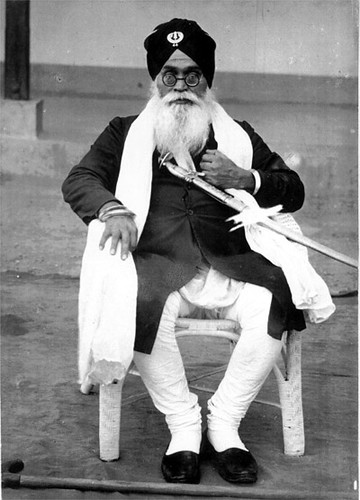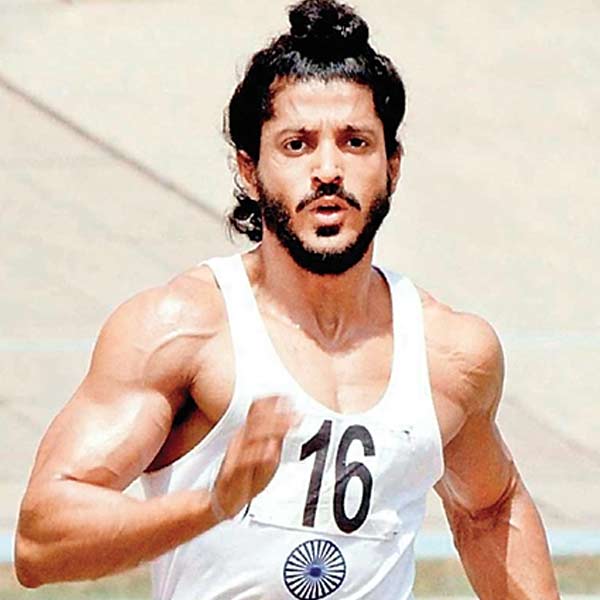It is a great challenge for me as a writer to draw a snapshot of some very revered visionaries of the sikh community and project their visoin in a way understandable the non-sikh world as well. I don't feel shy to announce that I've been deeply influenced by Bhai Rama Singh ji's work "Roop Gobind da... Ral Khalse da.... Sikka Sone da" and Bhai Randhir Singh ji's work "Andithi Duniya- The mystical invisible world". And the experience of reading and feeling these books is really worth sharing.
Bhai Rama Singh ji's work has been made available with the title "In search of the True Guru" as the English translation of it, but I read its Punjabi version. Both English and Punjabi titles somewhere change the context and presumption of the content of the book itself.
Though from the mystical perspective, such works should not be critically examined but I would definitely like to point out things that I found interesting in a totally positive context. One such thing is that Bhai Rama Singh ji has been a man of God throughout his life and has shown great enthusiasm to enchant the name of God since the tender age of 8 years. The best part is that he hasn't concealed any facts in his book about his family background and the belief system of his parents. According to the book he belonged to a Hindu family and was a clean shaven youth until his 20's and used to enchant the name of god as "Hare Rama... Hare Rama...". He has even stated that his father consulted a horoscope as he was worried about his future but found out that he was born to enchant the name of the the lord and travel places throughout the globe. Though his passion for enchanting the name of the true lord and his quest for finding the true guru was settled with his exposure to sikhism. He not only became a devout sikh but a renowned preacher who devoted his life in propagation of sikhism and the message of sikh Gurus throughout the world. His mystical experiences, visions and dreams that he has shared in his book are really inspiring and one such vision is that of the "Khalsa Raj" in the last chapter. Though he hasn't talked much about the political apprehensions or the state of governance in Khalsa Raj but he has drawn a snapshot of the achievements of the Khalsa in various fields especially philanthropy and somewhere his vision seems a bit fantasized as he has drawn a picture too rosy and hasn't talked much about he ground realities of Indian/ Punjab polity.
Bhai Rama Singh ji has also shown his great reverence for Bhai Randhir Singh ji in his book as he is considered to be an authority in the field of traditional sikhism called "Sanaatan/ Puraatan Sikhi" in Punjabi. Thinkers like Bhai Randhir Singh ji gave a completely different dimension to sikhism by writing over 20 revered books on sikh mysticism and spiritualism that helped in the transition of the community's image from being the martial race to the one with the intellectual prowess as well.
Though I have read the English translation of "Undithi Duniya", it would be very difficult for the contemporary Punjabi youth to read and comprehend his work in Punjabi because the modern language of Punjab has 30-40 % influence of the English language accounting to the IT revolution that the world has seen. But sticking to his work, the technicality with which he has executed his writings cannot be expected from the modern day preachers and requires a huge amount of religious acumen to be understood. The list of Bhai Sahib's works is shown below.
Though both the thinkers I have mentioned about in this article have relied heavily on their other-worldly experiences and visions but somewhere we too believe in the presence of the other world but the level of our sensitivity to the other-world is no where close to these thinkers and visionaries. It is also worth mentioning here that there is already a trust in the name of "Bhai Randhir Singh ji" and there are people who have already devoted their lives to his vision and also Bhai Rama Singh ji's vision. But, the recognition at the global level hasn't been equal to the other non-sikh renowned thinkers like Karl Marx.
Though I personally feel that Karl Marx gave some very powerful theories regarding religion, capitalism, socialism and his vision of a "Communist society" was revolutionary but I never feel like devoting my life to his vision. Some hardcore religious thinkers reject his theories out-rightly stating that they lack sensitivity and spiritual insight but they never see his theories operating in the religious shrines as well. The flow of money and commercialization of Gurudwaras show the practicality and logic behind his theories.
I would wind up this article by simply writing down my innermost feelings about the well-being and the longevity of the "Khalsa panth" and a hope to see the evils, that have crept in, getting destroyed. The onus is on the sikh youth especially in Punjab, to find the middle path.









